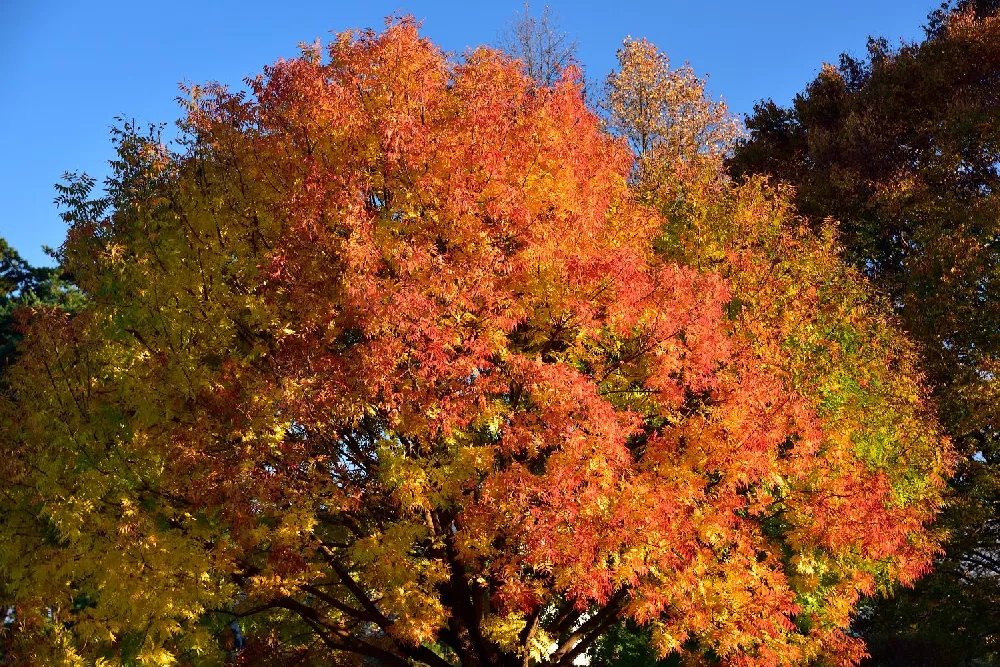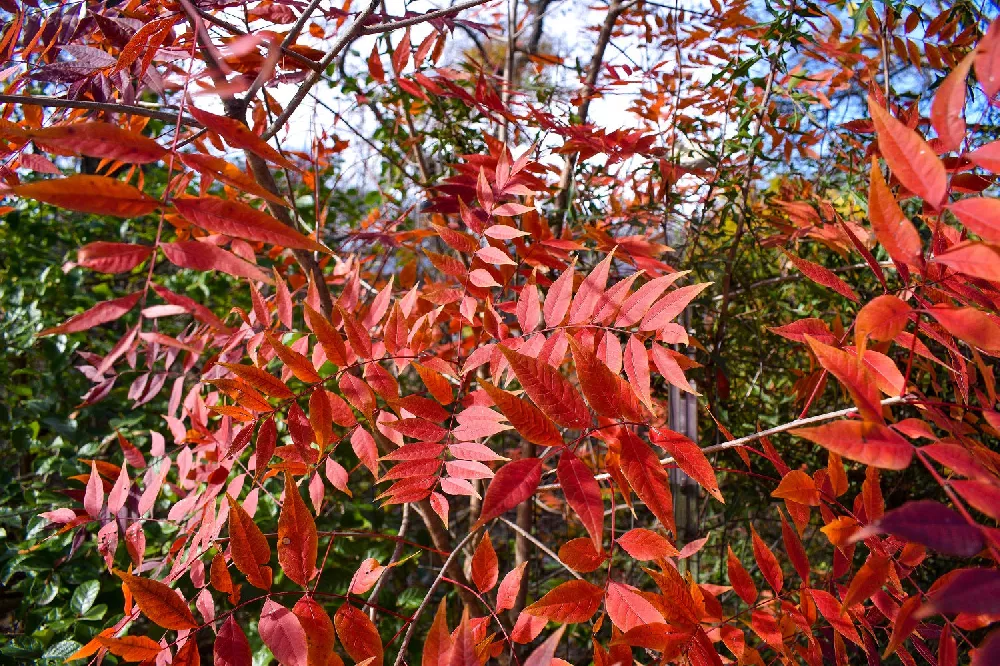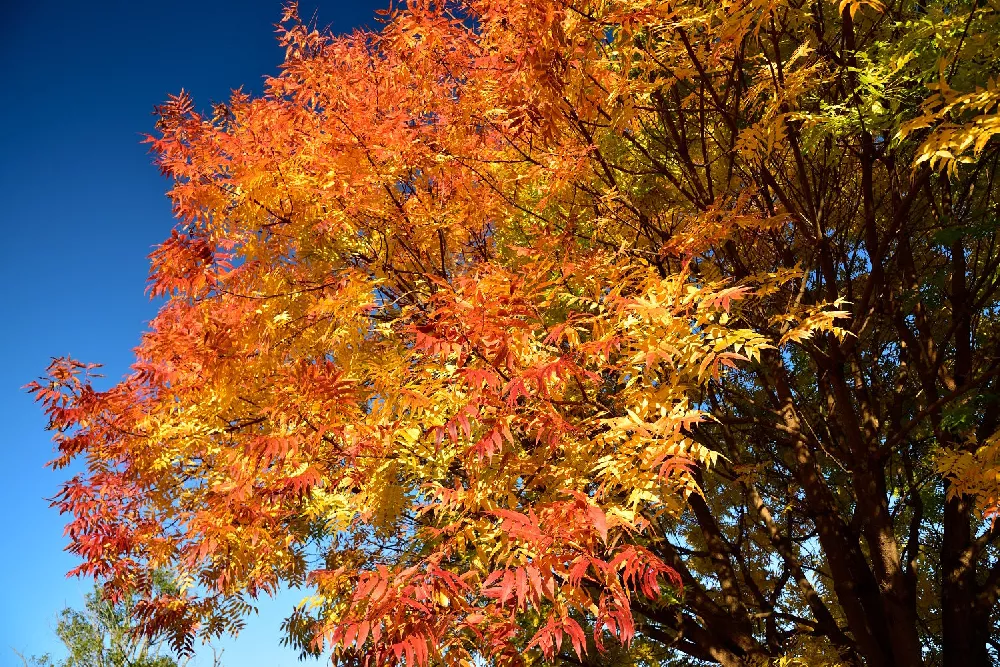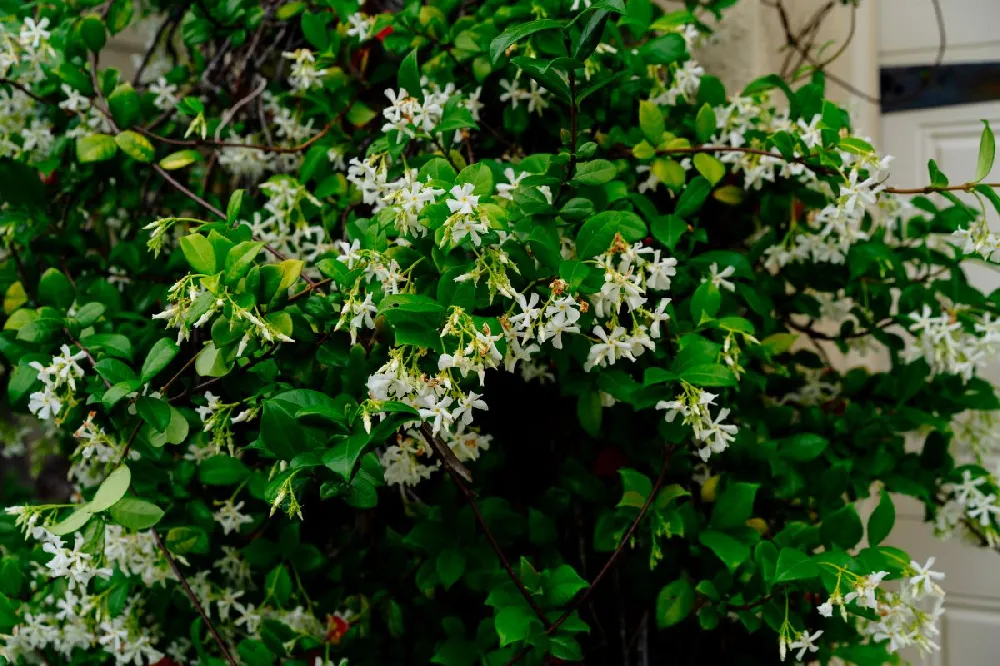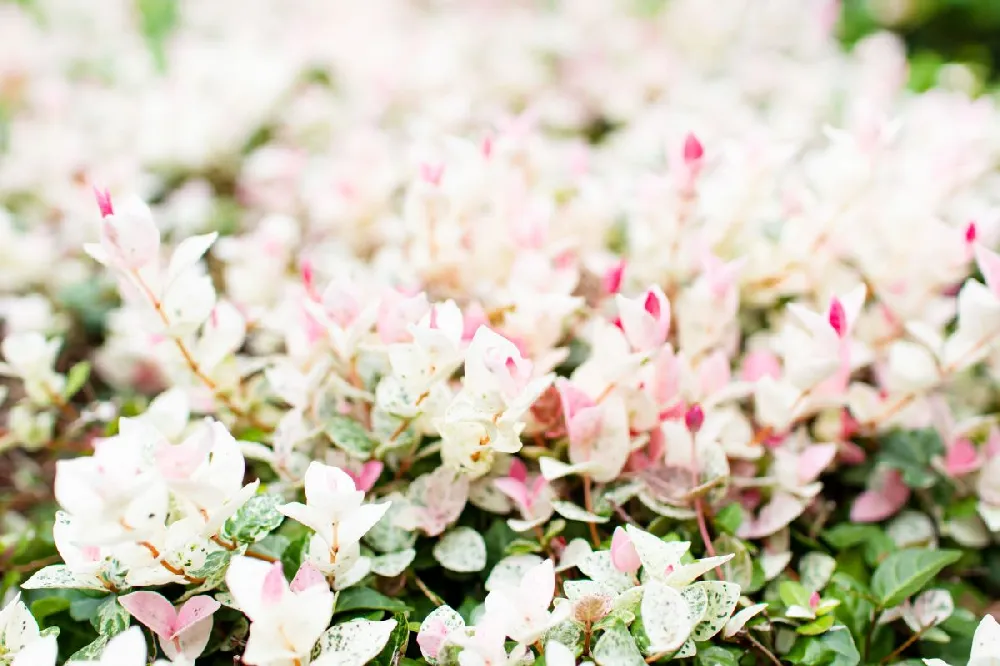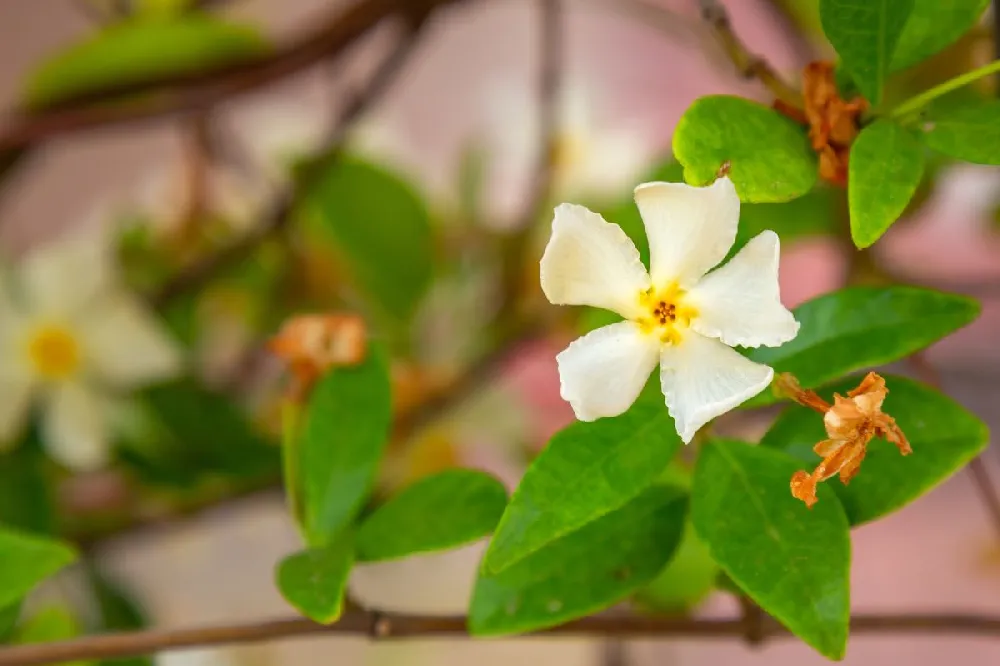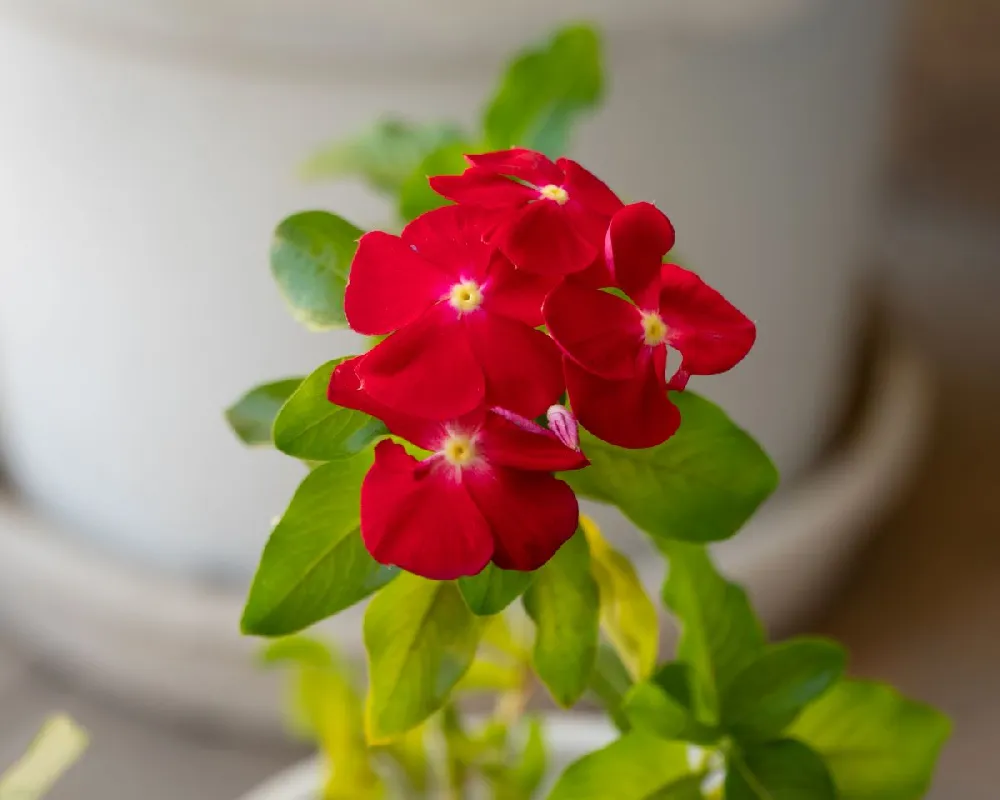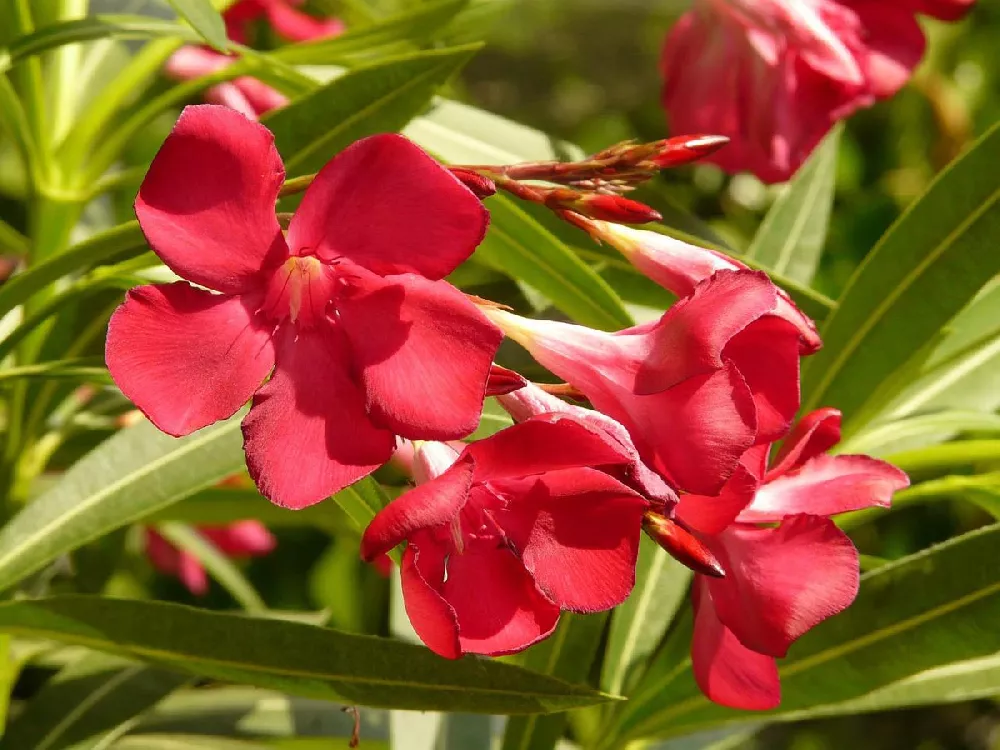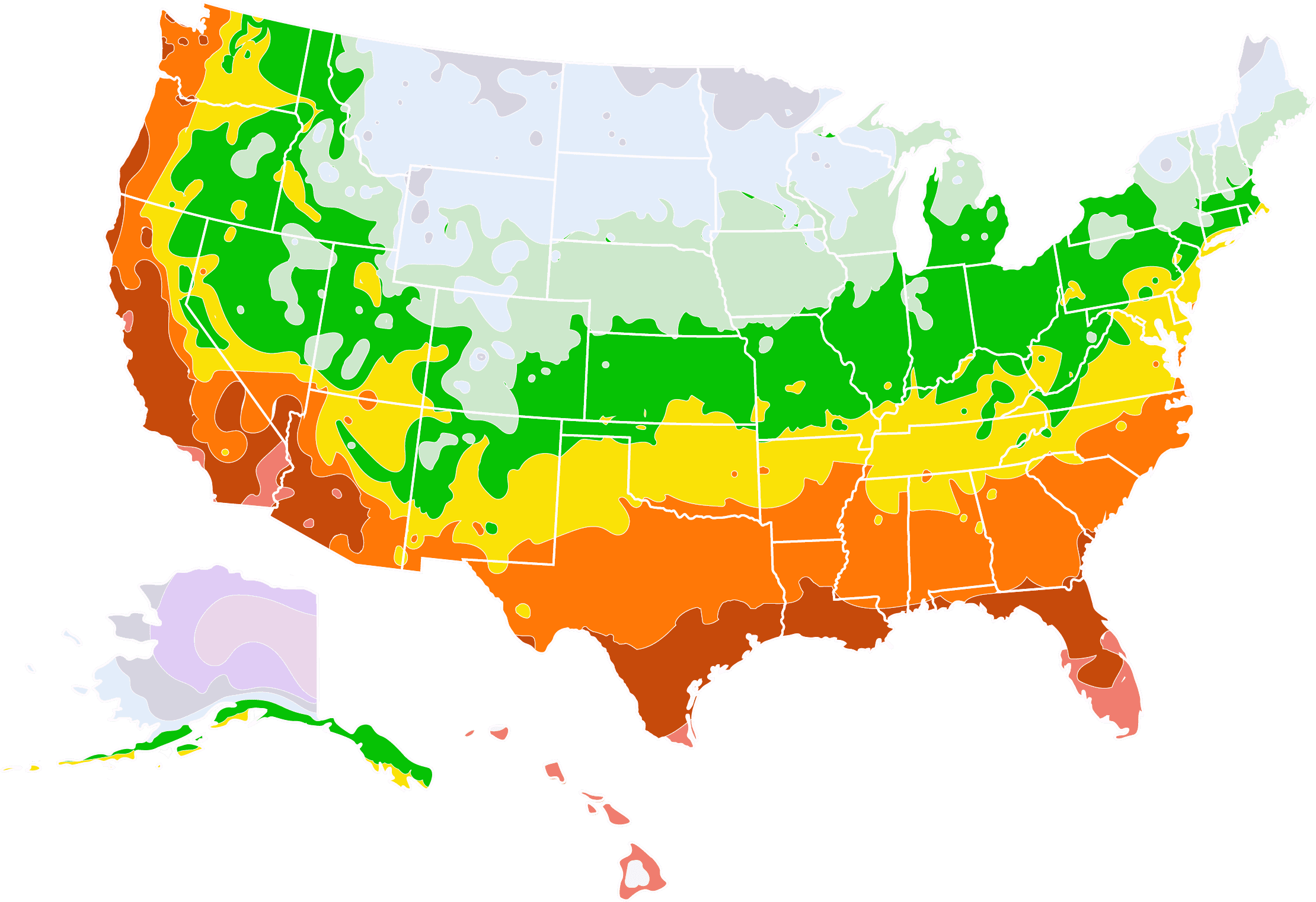- Home >
- Ornamental Trees >
- Chinese Pistache Tree
Chinese Pistache Tree for Sale - Buying & Growing Guide
- Ships in 1-2 days
- 1-Year Warranty Eligible
- Pots or accessories are not included unless specified in the product options.
Shipping Details:
Once your order is shipped, you’ll receive an email with a tracking number and estimated delivery date. Most orders ship immediately, but some items are seasonal and may only ship in spring or fall. These products are noted on the website.
There's a lot to love about the Chinese pistache tree, Pistacia chinensis. This medium-sized tree (it tops out at 25 to 35 feet) can be a brilliant addition to any landscape or garden. And we mean "brilliant" literally, as autumn sees these trees decked with vibrant red and orange leaves that last long after other trees drop their own. Although it is related to the pistachio, Chinese pistache trees are ornamental and do not produce nuts. What they do, however, is provide interest and texture in your garden, serving as a focal point that draws the eye while remaining carefree and easy to grow. Here are a few more reasons to love the Chinese pistache tree:
- Once established, the trees are drought-resistant.
- They aren't picky about soil type and can grow in clay, loam, or sandy soil.
- Glossy dark green compound leaves are appealing and make the tree an excellent variety for shade coverage.
Plant Care
Sunlight

The Chinese pistache tree grows best when it gets full sun: six or more hours of direct light a day.
Watering
Once established, these trees are drought-resistant, but water young trees several times a week.
Fertilizing

Fertilize in spring with a nitrogen-rich formula; use superphosphate if the trees do not show robust growth.
Planting and Care
Planting instructions
Site your Chinese pistache tree in soil that drains well, in a spot that gets good sunlight at least six hours a day. Since a mature tree has a canopy 25 to 35 feet wide, keep it 15 feet or more away from buildings, and avoid overhead wires. Dig a hole that’s as deep as the root ball and three times as wide. Unpot the sapling, and tease out any encircling roots, as they can girdle the tree and kill it. Place it in the hole and hold it upright as you fill in around it with topsoil, tamping down as you go to avoid air pockets. Water thoroughly, and spread an organic mulch, such as bark chips, around the root zone, being careful that it does not touch the trunk itself.
Watering and nutrients
For the tree’s first growing season, water it twice a week, unless you have good rainfall. Once it’s established and showing robust growth, you can cut back on watering. A mature tree should not need supplemental watering unless you’re experiencing an extreme drought. Fertilize young trees in spring and early summer with a nitrogen-rich product. An established tree won’t need fertilizing unless it shows signs of nutrient deficiencies, such as yellowing leaves.
Pollination
Chinese pistache trees are dioecious, meaning that male and female plant parts are on separate trees. If you have more than one tree including both types, you will see small bright fruits in clusters on the female trees. They are green in late summer, then turn to red and finally to blue. They are beloved by birds, which spread the seeds far and wide.
Pruning
A mature Chinese pistache tree shouldn’t need pruning except to remove broken or diseased branches. Young trees benefit from pruning in early spring to open up the center of the tree and eliminate weak branches, which may be coming out of the tree at an acute angle. Thin out lateral branches, leaving alternating, wide-angled ones on either side of the tree. You can also shape the young tree’s canopy somewhat, but don’t remove more than one-third of the branches in any one year.
Pests and diseases
The Chinese pistache tree is remarkably pest- and disease-free. Once in a great while, a tree may show signs of verticillium wilt, a fungal disease that causes leaves to curl up and wilt. It may also leave dark spots on the branches. There is no cure for it, and it lives on in the soil, so avoid replanting in the same spot. Pests that may impact your tree include aphids, scale insects, and foliage-feeding caterpillars.
Achieving maximum results
If you purchase a Chinese pistache tree and the young sapling is unbalanced or scrawny, don’t despair. The Chinese pistache tree has earned the nickname of the “ugly duckling tree” because it is often lopsided when young but eventually balances out to form a full, attractive canopy when it matures. Judicious pruning when your tree is young will help it build that full canopy, so schedule a pruning session each spring for the first few years. Trim out weak branches, as we suggested above, then step back and survey the tree. You want to build a good scaffold of wide branches around the central trunk, to give it the foundational elements that will allow it to thrive.
FAQs
Is the Chinese pistache a messy tree?
No. It is a deciduous tree, so the leaves fall after their spectacular fall display and may need to be raked up. The berries are small enough to be inconsequential, and don't make a mess under the tree. Many will be eaten by birds. In general, the Chinese pistache tree is an unassuming tree that doesn't need much care and doesn't need to be cleaned up after.
Where can I grow a Chinese pistache tree?
Able to grow in USDA hardiness zones 6 to 10 outdoors, the Chinese pistache is hardy down to 0 degrees Fahrenheit. That means it can be grown throughout the southern US. and as far north as Oregon and Massachusetts. It is too large and has too deep a taproot to be able to thrive in containers, so those in far northern regions of the U.S. would be better served by a different type of tree.
Why aren't the leaves on my Chinese pistache tree turning red?
There are a couple of reasons why you might be missing out on the Chinese pistache's spectacular fall display. If the tree is in partial shade, it may not give you the best fall colors. A very wet summer may also limit the brilliant reds and oranges on the tree. Generally, the male trees will give you more vibrant colors than the female tree, which compensates by producing pretty clusters of red berries.
Compare Similar Products
Customer Reviews
 Two thumbs up
Two thumbs upI was pleasantly surprised on the care of the package and the condition of the tree. I have not transplanted it yet but it is doing very well. Thank You!!
You can't add more Product Name - Product size to the cart.
OK